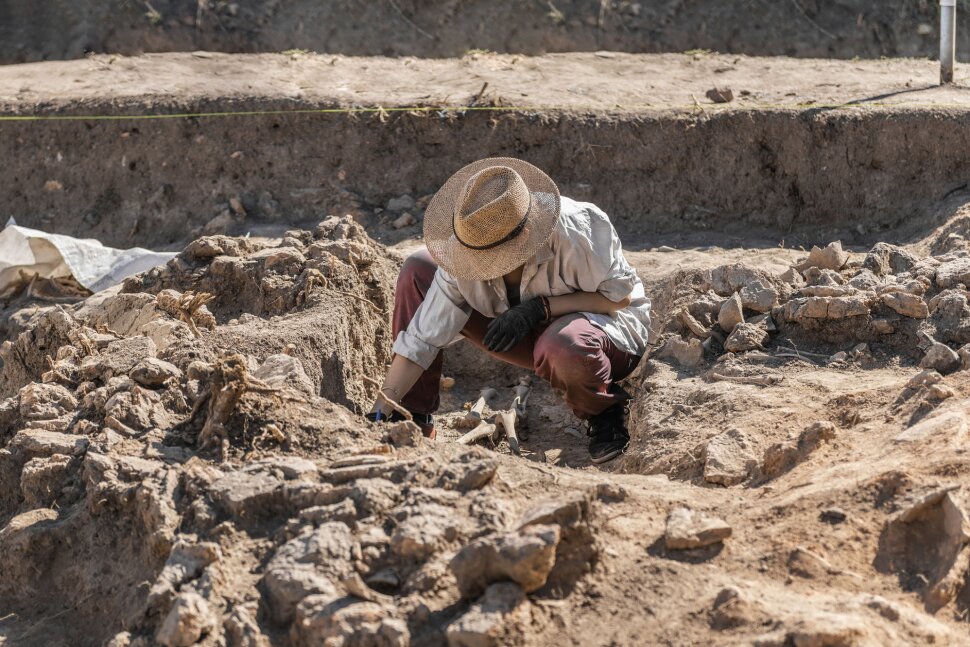The technologies employed by scientists and researchers for archaeological excavations are constantly evolving. While previously the surveying of a large area would require months, now a primary flight and photography session with up to 4K resolution takes about half an hour. Scientists obtain detailed information about the subject in digital form, which is convenient for study. This article discusses the features and advantages of using flying drones in archaeology.
How It Works
Studying objects of interest to archaeologists from the air is not a new technology. As early as the 1930s, hot air balloons were used for this purpose. However, the quality of the images obtained might have been sufficient for military reconnaissance, but not for detailed terrain analysis. Archaeology requires an enhanced level of detail in images to identify buildings buried under soil and other hidden or barely noticeable objects.
The use of flying drones marked the next step in the development of aerial photography for archaeologically significant areas. It led to a reduction in the time spent on investigations and improved work planning quality. However, the advent of digital technologies and 3D modeling necessitated a shift to a new methodology.
At this juncture, the accuracy in determining the drone’s coordinates throughout its flight became critically important. This accuracy ensured a precise alignment of captured photos and video materials to the digital map of the terrain.
A technology that included the combined use of signals from satellite navigation systems and ground-based stations was developed for such high accuracy in determining the drone’s coordinates and its position in space. A receiver is set up in the investigation area for this purpose.
This receiver collects data from satellite systems and assists the moving drone in adjusting its measurements. Such receivers belong to the category of low-cost RTK GPS systems. The name reflects the relatively low cost of the equipment and the ability to adjust the drone’s coordinates in real-time — Real Time Kinematic.
Features of UAVs in Archaeological Exploration
In the realm of archaeological exploration, the features of UAVs (Unmanned Aerial Vehicles) have proven to be nothing short of revolutionary. Their ability to capture high-resolution aerial imagery provides researchers with detailed snapshots of excavation sites, revealing patterns and structures often missed from the ground. Beyond mere imaging, UAVs are equipped with advanced remote sensing capabilities, such as LiDAR, which can penetrate vegetation and even shallow surfaces to detect hidden relics.
Their versatility shines as they effortlessly navigate challenging terrains, accessing areas that might be hazardous or impossible for human explorers. Additionally, with the integration of 3D mapping technologies, UAVs can generate comprehensive topographical models, offering a holistic view of archaeological sites. This accessibility, combined with their multifaceted imaging and sensing capabilities, ensures that no stone remains unturned, quite literally, in the quest to uncover the mysteries of the past.
Advantages of Using Flying Drones in Archaeology
Enhanced efficiency in planning research work. Particularly, after surveying a large area, it is possible to identify 2-3 main sites requiring more detailed examination.
Creation of high-quality 3D models. The use of detailed photographs converted into a digital model significantly expands the research team. Several research centers located in different countries can simultaneously study an object of archaeological interest, each specializing in specific aspects. This ensures a comprehensive examination overall.
Lowering the cost of conducting investigations. Equipment for surveying and filming territories with drones can be used by multiple teams of researchers. This, combined with the reduction in employee working hours and the number of external specialists involved, leads to cost reductions.
The use of stationary GPS receivers expands the possible area for conducting archaeological investigations practically to the entire surface of the Earth. This ensures equally high accuracy in coordinate determination, regardless of urban density, remoteness of territories from civilization, and other adverse factors.
It’s worth noting that there are extensive commercial networks of base stations. Their signal can be used for positioning drones in areas with reliable internet coverage, using a paid service. This will eliminate the need to purchase a separate receiver.
The advent of UAVs in archaeological research marks a significant turning point, ushering in an era of enhanced precision, accessibility, and depth in exploration. These flying marvels have not only streamlined data collection but have also unveiled layers of history previously obscured or out of reach. As we stand at this juncture, it’s imperative for researchers and enthusiasts alike to champion the continued innovation of UAV technologies. Embracing and furthering their adoption in archaeology promises not only to refine our understanding of the past but also to chart a future where the boundaries of discovery are continually expanded.














